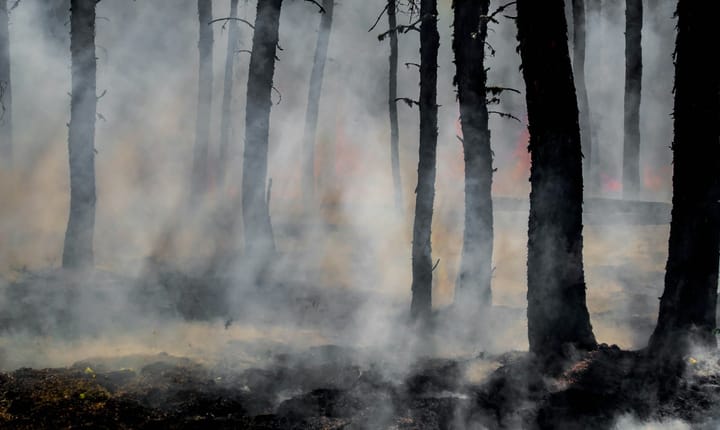Categories of Beadbi: Effective Prevention and Incident Analysis
To effectively prevent beadbi, we must divide it into various categories first, and then develop preventative solutions for each. This way, the Sangat in your Local Panth can implement measures to first prevent one category, and then continue with one additional at a time.

Need for Categories
Preventative Measures
Whenever a beadbi incident occurs, we are already too late. We can't go back and there is no way to reverse our failure in protecting our Guru Sahib Ji. That’s why, the primary goal of the Panth is to work on pre-beadbi stages that focus on prevention.
In order to completely prevent beadbi, we must be able to separate it into various kinds of incidents so that we can develop specialized solutions for each.
Sangat Specializations
To make our Panthic goal a reality, we need to develop skills and specialization needed to prevent specific beadbi incidents from happening. With this approach, we can better identify which category we want to focus on at our individual level.
When enough members pick their specializations, our local Sangat can together prepare and then succeed in preventing all forms of beadbi.
Threat Assessment
We can't develop prevention plans without a model to evaluate threats and risks. Since each category of beadbi can be evaluated independently to identify its vulnerabilities in a given context, this also makes it possible to its threat assessment.
With a clear perspective on threats, we can better manage our preventative plans and adequately allocate resources our to defend from multiple risk factors.
Incident Analysis
Normally we think beadbi as a single incident, but in reality it is a combination of various kinds of beadbi happening together, often in a sequence over time. That's why we must develop a model for incident analysis to help us identify our shortcomings when we do fail in preventing beadbi.
In order to do that, we can use categories as a starting point in the post-beadbi process, especially for historical incidents that lack adequate documentation.
List of Beadbi Categories
Please Note: This list will be constantly updated as more improvements are made.
Print Beadbi
Once Gurbani is transferred onto paper, the paper becomes sacred for us. After printing, it is not possible to correct any errors. Print Beadbi is a concern that covers a wide range of actions in the Panth, from printing of Saroops, Pothis, and all kinds of ways Gurbani is scribed onto a paper or other materials.
- Disposable Print Beadbi: This is the most frequent occurrence that concerns with incidents where Gurbani is printed on paper for disposable one-time use, often related to marketing, events, invitations, newspapers, or magazines. In such cases, Gurbani ends up in the same place where all disposable papers do: trash.
- Degradable Print Beadbi: This happens when Gurbani is printed on low-quality paper and leads to damage due to deterioration.
Neglect Beadbi
When we allow beadbi to happen, it is usually one aspect of it that we associated with the incident. However, there is a degree of neglect that occurs way before the final incident.
Neglect Beadbi is, therefore, a category that helps us identify acts of beadbi that preceed other subsequent ones, that are usually more severe and non-recoverable.
- Lack of Care Beadbi: This is the most predominant one that leads to many other forms of beadbi. It concerns with neglecting procedures that are essential to take care of Gurbani, especially Saroops of Guru Granth Sahib Ji.
- Abandonment Beadbi: Almost all times that Guru Granth Sahib Ji is attacked, it is when we leave the Saroop of Guru Sahib Ji alone. This one is not even about needed trained Sikhs to provide perimeter protection, but simply being present close to the Saroop.
- Non-Conservation Beadbi: When efforts that prolong the longevity of Saroops are lacking or if any repairs and conservation measures are unreasonably delayed.
Textual Beadbi
Guru Sahib Ji has made it clear that not even a single word of Gurbani can be altered. Therefore, any changes to the original form of Gurbani are considered beadbi, especially when altered Gurbani is printed and can't be corrected.
In contrast to other categories, preventing Textual Beadbi requires a lot of spiritual effort along with significant expertise and study of historical Saroops and manuscripts.
- Inaccurate Print Beadbi: When due to negligence, there are mistakes in the printing or writing of Gurbani. This applies to small quantity prints.
- Error Print Beadbi: This is similar to Inaccurate Print Beadbi but on a more systemic and high quantity of print.
- Malevolent Print Beadbi: Intentional alterations that are not due to negligence or error.
Agan-Bhet Beadbi
Countless Saroops and Pothis have been set on fire by our own community. However, such incidents were not considered beadbi simply beacause they were made into a ceremony presented as Gurmat-approved for old, "birdh" Saroops or Pothis.
This practice has put on fire so many Saroops of Guru Granth Sahib Ji that were not old enough and in some cases in close to perfect condition. That's why, this practice is to be considered beadbi, unless proven otherwise with extensive evidence, verification procedure, and appropriate physical analysis (pre-beadbi)
Here are some key points related to Agan-Bhet Beadbi:
- Degradable Print Beadbi is the root cause.
- Lack of Care Beadbi is the accelerant that reduces the longevity.
- The "birdh" pretext related to Agan-Bhet should require an investigation into how old a Pothi or Saroop really is, especially to ensure it's not an attempt to cover up for existing Neglect Beadbi or another category.
Physical Harm Beadbi
This category concerns with harm to the physical form of Gurbani.
- Physical Attack Beadbi: This is when the attacker fails or is stopped before any damage occurs but there is clear disrespect to the Satkaar, such as changes to the state of Rumalla, Palki, Chor-Sahib, Shashtar, or other articles that are in Adab of our Guru Granth Sahib Ji.
- Physical Damage Beadbi: When we fail to prevent the attack and there is an identifiable damage to the physical Saroop of our Guru Sahib Ji.
- Physical Destruction Beadbi: In unfortunate cases of our Panthic failure, when the damage is so severe that the Saroop is can't be done Parkaash even with significant repair efforts. Please note that this criteria is likely to be updated as more in-depth consideration is given when we enter the phase of increased specializations in our Panthic priority of beadbi prevention.
Which Category to Start With?
If you or others in your Sangat want to get started with a a beadbi that requires the least amount of resources to prevent, then you can focus on Disposable Print Beadbi since raising awareness is the main preventative measure for it.



